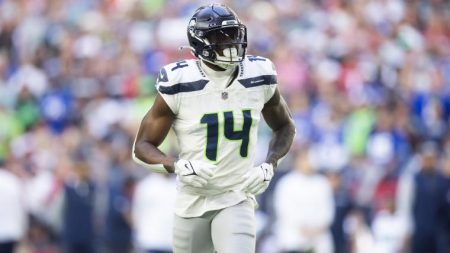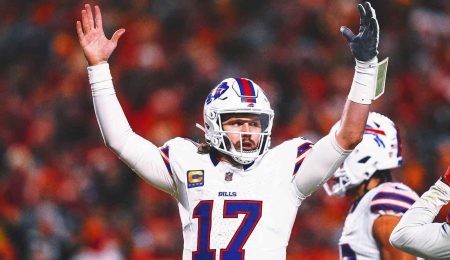The Debate: Travis Hunter as a Two-Way Player
In the world of professional football, innovation and versatility are highly prized. In a recent video posted by the National Football League, Nick Wright, Kevin Wildes, and Coach Eric Mangini delve into the feasibility and advisability of having Travis Hunter, a highly touted young talent, play both wide receiver (WR) and cornerback (CB) in the NFL. This discussion brings to light the potential benefits and challenges of such a unique role, a concept that has both supporters and skeptics in the football community.
The Rising Star: Travis Hunter
Travis Hunter is a name that has been making waves in the football world for his exceptional skills on both sides of the ball. As a wide receiver, Hunter has demonstrated remarkable speed, agility, and hands, making him a formidable target for any quarterback. On the defensive side, his instincts, coverage skills, and physicality have marked him as a standout cornerback. The versatility he brings to the table is rare and has sparked significant interest among coaches and analysts.
The Case for a Two-Way Player
Nick Wright, a prominent sports analyst, argues that the NFL is becoming more versatile and dynamic. He points out that the league has seen a trend where players are asked to take on multiple roles. Wright believes that having a player like Hunter, who can excel in both offensive and defensive positions, would provide a significant strategic advantage. He suggests that teams could use Hunter’s unique skill set to confuse opponents and create mismatches that could be exploited.
Kevin Wildes, another seasoned analyst, adds that the mental and physical demands of professional football are rigorous, but a player of Hunter’s caliber might be able to handle the workload. He cites examples of players like Deion Sanders, who successfully played both cornerback and wide receiver during his career. Wildes emphasizes that the NFL is a league of specialists, but the right player could break the mold and redefine what is possible.
The Challenges and Concerns
Coach Eric Mangini, a former NFL coach with extensive experience, presents a more cautious perspective. He highlights the significant physical and mental toll that playing both ways would take on Hunter. Mangini notes that the NFL season is grueling, with a high risk of injury and fatigue. He questions whether a player can maintain peak performance in both positions while facing such demands. Mangini also points out that the complexity of game plans and the need for specialized training make it challenging for a player to excel in two vastly different roles.
Historical Precedents and Modern Context
The discussion also delves into historical precedents and how they might inform the modern context. Kevin Wildes brings up the example of Deion Sanders, who not only played both WR and CB but also had a successful career in both the NFL and MLB. Wright adds that while Sanders is a rare case, the modern NFL might be more open to such versatility due to the evolving nature of the game. Both analysts agree that the league is more willing to experiment with innovative strategies, and a player like Hunter could be a valuable asset if managed correctly.
Conclusion: Weighing the Pros and Cons
In conclusion, the debate over whether Travis Hunter should play both wide receiver and cornerback in the NFL is a complex and multifaceted one. While the potential benefits of having such a versatile player are undeniable, the physical and mental demands of the sport cannot be overlooked. The historical precedent of players like Deion Sanders suggests that it is possible, but the modern context and the unique demands of the NFL must be carefully considered. Ultimately, the success of such an experiment would depend on the player’s individual capabilities, the coaching staff’s strategic vision, and the team’s overall strategy. As the NFL continues to evolve, the possibility of a two-way player like Travis Hunter could be a fascinating development to watch.











